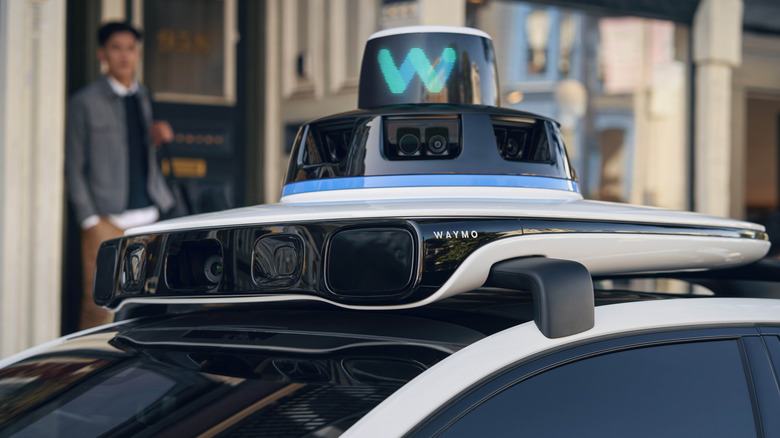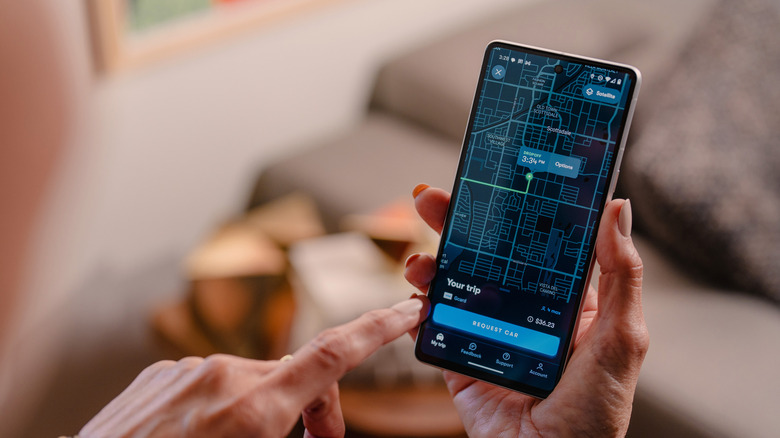Here's How Much A Waymo Ride Will Cost You Compared To Uber And Lyft
Driverless taxis are here — at least if you live in Los Angeles, San Francisco, Atlanta, and a few other cities across the U.S. Since it started operating in its first city in 2018, Waymo has so far provided more than 10 million rides. The technology used by these self-driving cars leverages a combination of radar, cameras, and Light Detection and Ranging (Lidar) 3D images to navigate routes and transport passengers. According to the company, Waymo rides have thus far had fewer crashes and accidents involving pedestrians than cars operated by human drivers. In fact, the true road danger for Waymo's autonomous cars is human errors from other cars.
As Waymo spreads to more cities, you might be wondering how its prices compare to other ridesharing apps. If Waymo is available in your area, you can calculate your trip cost directly by downloading the Waymo app and entering your pickup spot and destination. In general, the price of a trip will be influenced by the time of day it is, how far you're going, and how many cars are available.
You may think that driverless technology would mean lower fares, but that technology doesn't come cheap. According to a report released in June 2025 by rideshare price aggregator app Obi, the average price of a Waymo ride is almost $6 more than an average Lyft ride and almost $5 more than taking an Uber. The price gap differs, however, depending on what time of day people request rides.
Is Waymo worth paying more?
At peak times, a Waymo ride will cost you almost $9.50 more than an Uber and about $11 more than a Lyft, according to Obi's report. Although Uber and Lyft were always cheaper, there were some other times of day when the price gap between Waymo and these apps was smaller, such as at 5 a.m. when the price difference was closer to $1 or $2. The price gap also narrows for longer trips, so if you're not going far, you may want to stick with Lyft or Uber. Obi also noted that Waymo's prices were more unpredictable than those of the other ride share services.
Despite the price difference and how odd it might feel getting into a vehicle with an empty driver's seat, many travelers still seem willing to give Waymo a chance. The report released by Obi also surveyed riders in several cities and found that 70% of those who had already taken a Waymo ride preferred it over a traditional service with a driver. However, many are still worried about the safety of these autonomous vehicles, and about 40% of people in Obi's survey indicated that they aren't willing to pay more for the service. Time will tell if riders truly enjoy a driverless ride or if some are simply seeking a novel experience.

